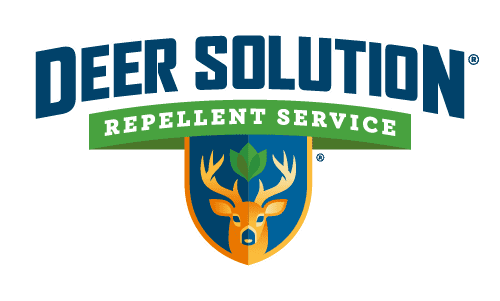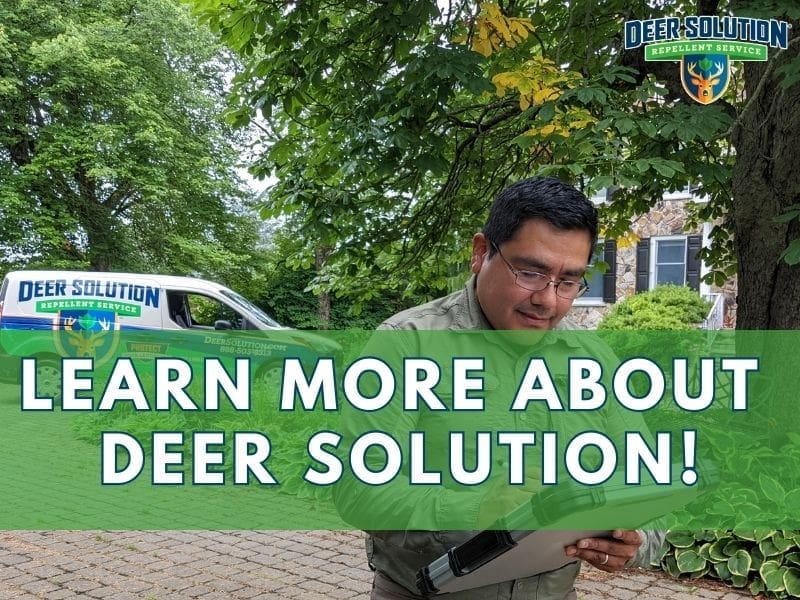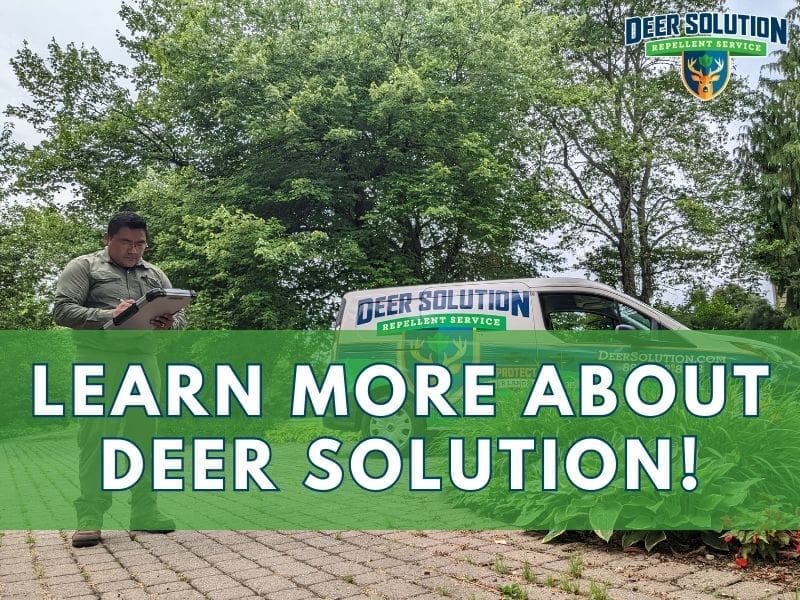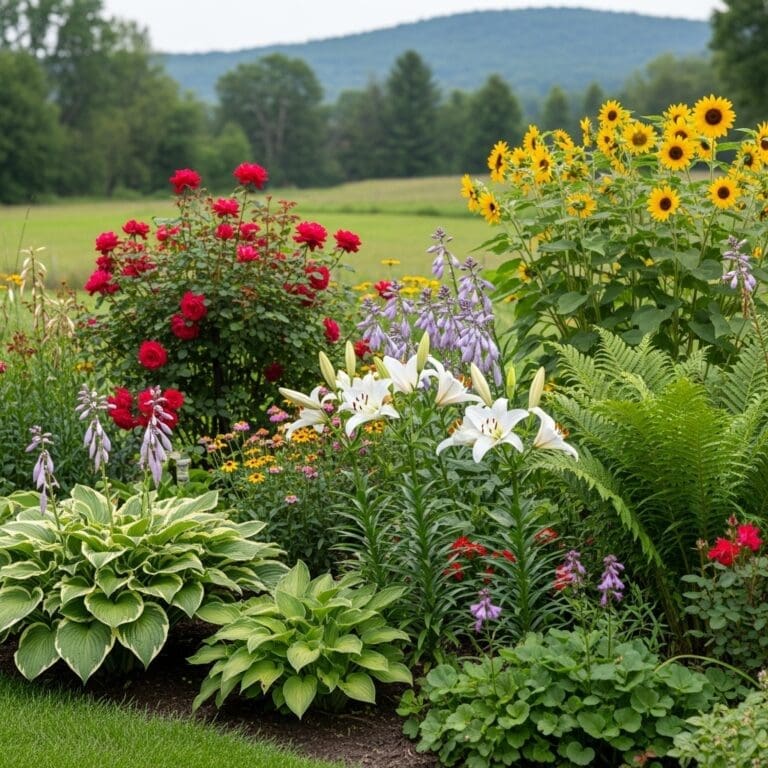If you’re finding hoof prints in your mulch, missing flower buds, or ragged edges on your plants, deer could be the culprits. And while many homeowners are quick to blame location or chance, the truth is that your landscaping choices may be inviting deer in without you realizing it. Deer are opportunistic feeders, and certain plants, layouts, and yard features can make your property particularly attractive to them.
Let’s walk through some of the most common landscaping mistakes that attract deer, and help you understand what to avoid—and how to make your yard less appealing without sacrificing beauty or function.
Planting Deer Favorites in Easy-to-Reach Spots
One of the most common missteps is planting highly desirable, deer-friendly plants in exposed or accessible areas. Plants like hostas, daylilies, roses, tulips, and pansies are essentially deer candy. When these are placed near the edge of your property, along walkways, or in open beds where deer can easily approach, you’re effectively setting out a buffet.
While it’s possible to enjoy these plants with proper protection, their placement plays a big role in how vulnerable they are. Landscaping designs that include layers, with less appetizing plants on the outside and more desirable ones closer to the home, can help reduce browsing. But when everything is planted in the open, deer have no reason to stop short.
Ignoring Plant Texture, Scent, and Taste
Deer don’t just choose what to eat based on appearance. Their feeding behavior is heavily influenced by taste, smell, and texture. Homeowners often unknowingly fill their gardens with soft, tender foliage that’s easy to digest and lacks strong scents or deterrents.
Plants with fuzzy, leathery, prickly, or fragrant leaves are generally less appealing to deer. By relying solely on aesthetics and ignoring these natural deterrents, you may be making your landscape far more tempting. Incorporating more deer-resistant plants, like lavender, salvia, boxwood, or ornamental grasses, can help send a message that your yard isn’t an easy target.
Skipping Variety in Landscape Design
Another issue that makes your property attractive to deer is lack of diversity. Monoculture plantings, using the same species throughout large sections of your yard, can actually train deer to come back. When they know they’ll find the same tasty meal every time, they quickly add your yard to their regular route.
Instead, a varied, mixed planting strategy can confuse or frustrate deer, especially when combined with plants that emit strong odors or have textures they dislike. Diversity in plant types, heights, and textures isn’t just good for aesthetics, it’s also a smart way to reduce browsing.
Leaving the Yard Wide Open
Deer are cautious, but they’re also creatures of habit. A yard that’s wide open with long lines of sight and minimal obstacles allows deer to move freely and browse with minimal risk. If your landscape lacks structure, barriers, or height variation, deer feel more comfortable entering and staying.
Landscape features like dense shrubs, rock walls, terraces, or even decorative fencing can make movement more difficult for deer and reduce their comfort level. Creating “zones” within your yard or using hardscaping elements to break up open spaces can serve as passive deterrents, even without a traditional fence.
Not Addressing Water and Shelter Sources
Your landscape might be more than a food source, it might be providing deer with everything they need to thrive. A nearby water source such as a birdbath, koi pond, or fountain can increase the chances of deer returning. Likewise, if your yard backs up to wooded areas, has dense shrubbery, or includes unmanaged brush piles, deer may use it for shelter or resting spots.
While you can’t always change your property line, keeping landscaping tidy and removing brush or low cover near feeding areas can help. Avoid placing deer-attracting plants near these natural “entry points,” and try to limit features that provide water or cover.
Assuming DIY Deterrents Are Enough
Many homeowners rely on home remedies like hanging soap bars, spreading human hair, or using motion-activated lights or sprinklers. While these methods can offer short-term relief, deer often adapt to them quickly, especially if the yard continues to offer high-reward food sources.
The mistake isn’t necessarily trying these options, but relying on them alone. When your landscaping invites deer in, these light deterrents typically aren’t strong enough to stop them for long. Instead, combining smart landscape design with a consistent, professional deer repellent plan provides more reliable, long-term protection.
Forgetting About Seasonal Changes
Plants change throughout the year, and so does deer behavior. A yard that’s ignored in late fall or winter may still attract deer looking for evergreen foliage, bark, or dormant bulbs. Many homeowners let their guard down once the growing season ends, but deer are active year-round and will continue to browse whatever is available.
Landscaping that includes year-round food sources, like holly, arborvitae, or winter pansies, can keep deer interested even in the off-season. That’s why year-round awareness and planning are essential if you want to minimize the chances of becoming a regular feeding stop.
Final Thoughts
Deer damage can be frustrating, expensive, and disheartening, but in many cases, it starts with simple landscaping decisions. By understanding what deer are drawn to and how your yard may be unintentionally encouraging visits, you can take meaningful steps to protect your plants without sacrificing curb appeal.
Avoiding the common mistakes outlined above, like planting deer favorites in exposed areas, ignoring scent and texture, or leaving your landscape wide open, can make a significant difference. When combined with a well-designed deer repellent program, you can enjoy a thriving, beautiful yard without the worry of ongoing deer damage.
If you’re not sure whether your landscaping is inviting deer in, it may be worth consulting a local deer control expert like Deer Solution. With the right knowledge and support, your landscape can become far less appetizing, and much more resilient.










